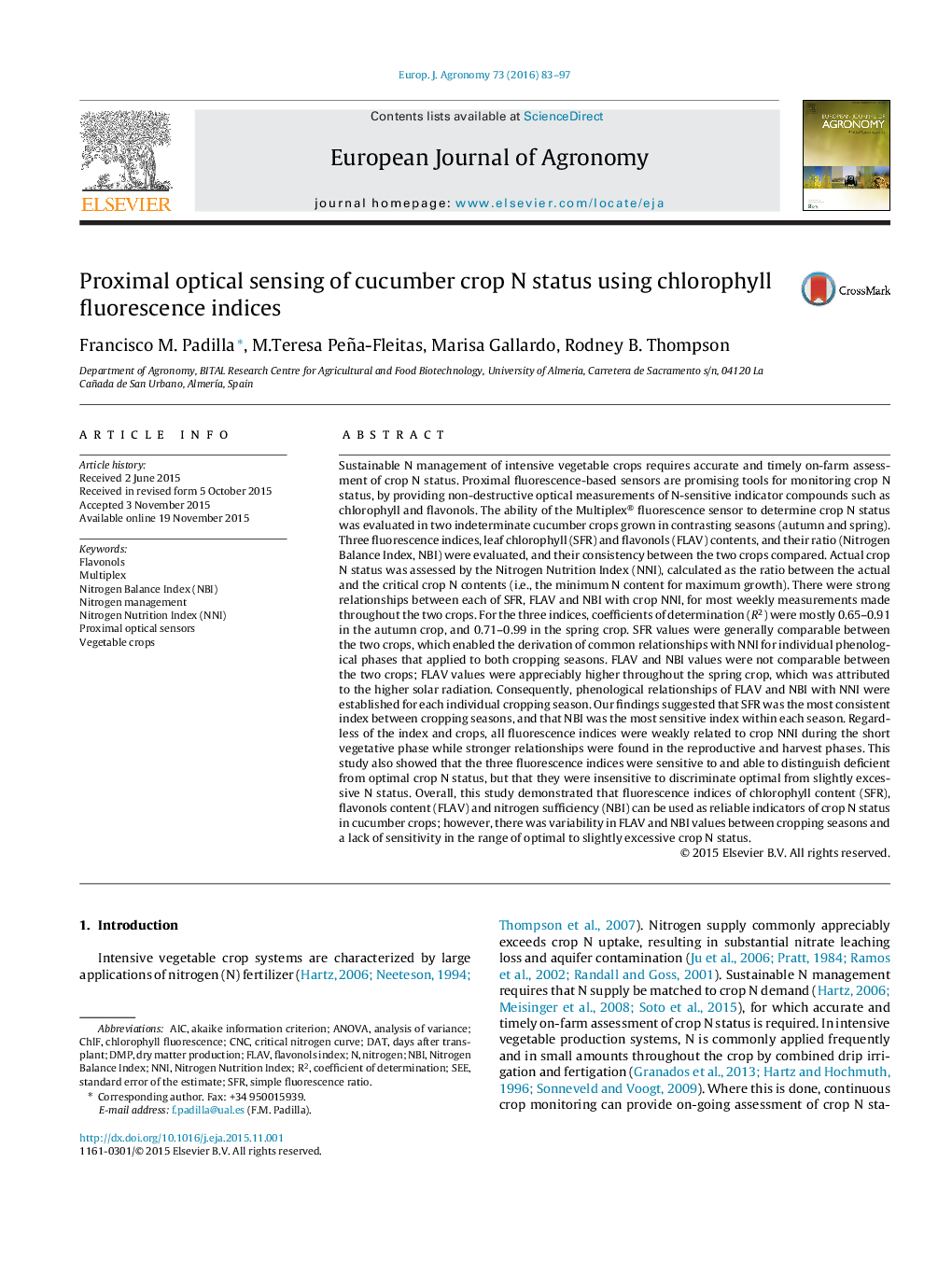| کد مقاله | کد نشریه | سال انتشار | مقاله انگلیسی | نسخه تمام متن |
|---|---|---|---|---|
| 4508804 | 1624452 | 2016 | 15 صفحه PDF | دانلود رایگان |

• Strong relationships of SFR, FLAV and NBI with NNI in two contrasting seasons.
• All indices were insensitive at slightly excessive crop N status.
• Common phenological relationships of SFR with NNI for autumn and spring crops.
• Separate phenological relationships of FLAV and NBI with NNI for each season.
• SFR most consistent between seasons, NBI most sensitive within each season.
Sustainable N management of intensive vegetable crops requires accurate and timely on-farm assessment of crop N status. Proximal fluorescence-based sensors are promising tools for monitoring crop N status, by providing non-destructive optical measurements of N-sensitive indicator compounds such as chlorophyll and flavonols. The ability of the Multiplex® fluorescence sensor to determine crop N status was evaluated in two indeterminate cucumber crops grown in contrasting seasons (autumn and spring). Three fluorescence indices, leaf chlorophyll (SFR) and flavonols (FLAV) contents, and their ratio (Nitrogen Balance Index, NBI) were evaluated, and their consistency between the two crops compared. Actual crop N status was assessed by the Nitrogen Nutrition Index (NNI), calculated as the ratio between the actual and the critical crop N contents (i.e., the minimum N content for maximum growth). There were strong relationships between each of SFR, FLAV and NBI with crop NNI, for most weekly measurements made throughout the two crops. For the three indices, coefficients of determination (R2) were mostly 0.65–0.91 in the autumn crop, and 0.71–0.99 in the spring crop. SFR values were generally comparable between the two crops, which enabled the derivation of common relationships with NNI for individual phenological phases that applied to both cropping seasons. FLAV and NBI values were not comparable between the two crops; FLAV values were appreciably higher throughout the spring crop, which was attributed to the higher solar radiation. Consequently, phenological relationships of FLAV and NBI with NNI were established for each individual cropping season. Our findings suggested that SFR was the most consistent index between cropping seasons, and that NBI was the most sensitive index within each season. Regardless of the index and crops, all fluorescence indices were weakly related to crop NNI during the short vegetative phase while stronger relationships were found in the reproductive and harvest phases. This study also showed that the three fluorescence indices were sensitive to and able to distinguish deficient from optimal crop N status, but that they were insensitive to discriminate optimal from slightly excessive N status. Overall, this study demonstrated that fluorescence indices of chlorophyll content (SFR), flavonols content (FLAV) and nitrogen sufficiency (NBI) can be used as reliable indicators of crop N status in cucumber crops; however, there was variability in FLAV and NBI values between cropping seasons and a lack of sensitivity in the range of optimal to slightly excessive crop N status.
Journal: European Journal of Agronomy - Volume 73, February 2016, Pages 83–97